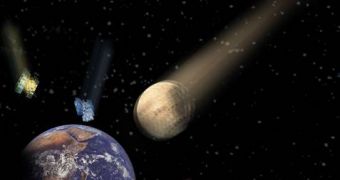The centrifugal force generated by the spin of our planet would push us to the space if another force, gravity, would lack. Because the Earth is spherical, the interaction of the both forces varies as we move further away along the terrestrial ax. The centrifugal force is minimal in the polar areas and maximal on the Equator. On the equatorial line, the gravity has an average value of 9.78 m/second squared and on the poles its value is of 9.83 m/second squared. This means that we are 0.5% lighter on the Equator.
The power of gravity leads to the formation of galaxies, stars and black holes but, at the same time, is like a chain binding us to the ground. Despite its infinite spread, gravity is the least known and weakest of all forces found in the universe. For instance, the force of repulsion between two positively charged protons is 10^36 times higher than gravity's pull between them, but gravity cannot be explained by Einstein's theory of relativity, which fits in only on large scales.
By now, physicists can only guess that gravity is triggered by tiny, massless particles named gravitons, emanated by the gravitational fields, which drag on every piece of matter up to the speed of light. Researchers believe gravitons elude them because they interact so weakly with matter.
Currently, physicists are rather trying to confirm the existence of the Higgs bosons, particles related to gravitons that give mass to the matter. Finding elusive particles like the Higgs is something that seems to be taken from science fiction movies that deal with time traveling. Huge machines are used to accelerate particles up to the speed of light, then smash them together, imitating the enormous bursts of energies present during the early universe, when particles were too energetic to stay together forming more known protons, neutrons and similar particles. Will particle accelerators, however, eventually pop out a graviton?

 14 DAY TRIAL //
14 DAY TRIAL //